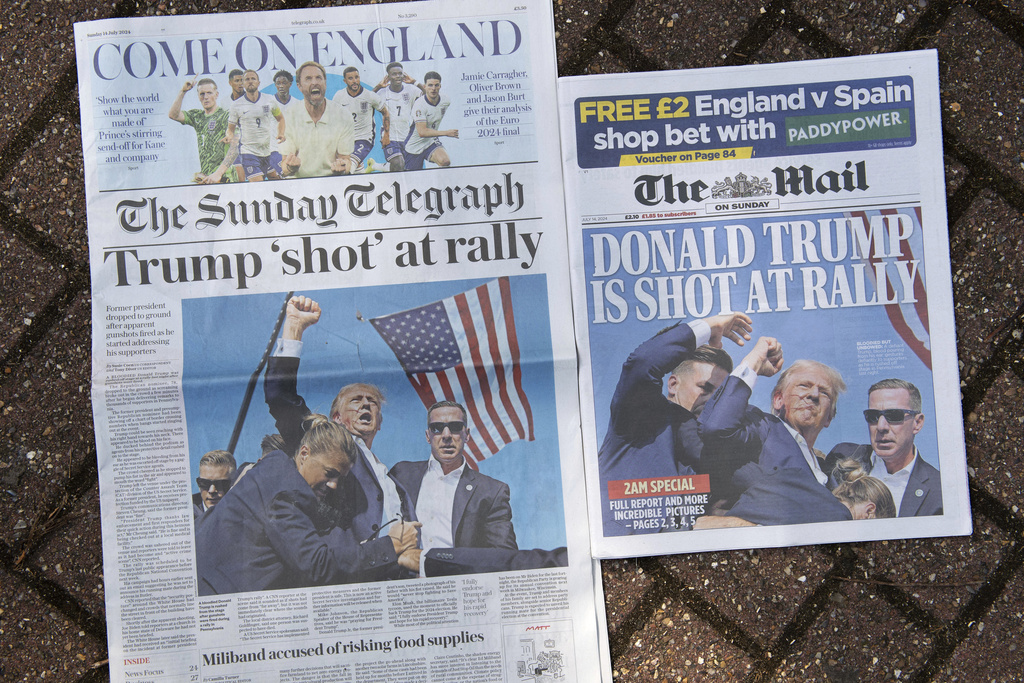American military historian Victor Davis Hanson recently posted a piece titled “Assassination porn and the sickness on the left.” In it, he points out an unprecedented phenomenon that has emerged in public discourse since 2016: celebrities openly fantasizing about the murder of a president or presidential candidate.
Historically, Americans have been mindful of the fatal attacks on Abraham Lincoln, William McKinley, John F. Kennedy, and Robert Kennedy, viewing such violent rhetoric as entirely unacceptable. For example, when a clown at a rodeo donned a Barack Obama mask, he faced a permanent ban from performing. Yet, this tacit prohibition seems to have been suspended in the case of one individual: Donald Trump.
Hanson compiled examples of how various figures in American pop culture have publicly imagined harming Trump: by slugging his face (Robert De Niro), by decapitation (Kathy Griffin, Marilyn Manson), by stabbing (Shakespeare in the Park), by clubbing (Mickey Rourke), by shooting (Snoop Dogg), by poisoning (Anthony Bourdain), by bounty killing (George Lopez), by scavengers eating his corpse (Pearl Jam), by suffocating (Larry Wilmore), by blowing him up (Madonna, Moby), by throwing him over a cliff (Rosie O’Donnell), just by generic “killing” him (Johnny Depp, Big Sean) or by martyring him (Reid Hoffman: “Yeah, I wish I had made him an actual martyr.”).
Hanson also recalled a recent statement by Joe Biden, who said last week: “I have one job, and that’s to beat Donald Trump. I’m absolutely certain I’m the best person to be able to do that. So, we’re done talking about the debate, it’s time to put Trump in a bullseye.”
The phrase “put in a bullseye” typically means placing someone at the center of a shooting target in America. Although likely a metaphor, in light of recent events, it has taken on a sinister connotation.
Moreover, Hanson noted a recent cover of The New Republic magazine, which featured Trump altered to resemble Hitler. The editorial justified their concept by stating: “This election year, we can either debate whether Trump meets 9 or 17 criteria defining fascism or we can say, ‘He’s damn close and we better fight.'”
We chose the cover image, based on a well-known 1932 Hitler campaign poster, for a precise reason: that anyone transported back to 1932 Germany could very, very easily have explained away Herr Hitler’s excesses and been persuaded that his critics were going overboard. After all,… pic.twitter.com/x79Rkh86O1
— The New Republic (@newrepublic) July 7, 2024
Consistent with this sentiment, commentators like Joy Reid and Rachel Maddow have incessantly warned to keep the new Hitler as far from the White House as possible, and suggested studying Hitler to understand Trump.
In such a climate, Hanson argues, it’s easy to imagine someone unhinged believing all these claims and thinking that the only salvation from a new Hitler and genocide is to pull the trigger. Hanson also mentions efforts by some congressmen to strip Trump of what little remains of his already diminished personal security. Without these agents, a recent attack in Pennsylvania could have been far bloodier.
The pattern is simple: Activate the industry of contempt and hatred, demonize the opponent, inflame emotions, incite passions, remove protection, and… wait. Will an assassination attempt on Trump lead to a sobering realization? It would be beneficial, not only for Americans.






